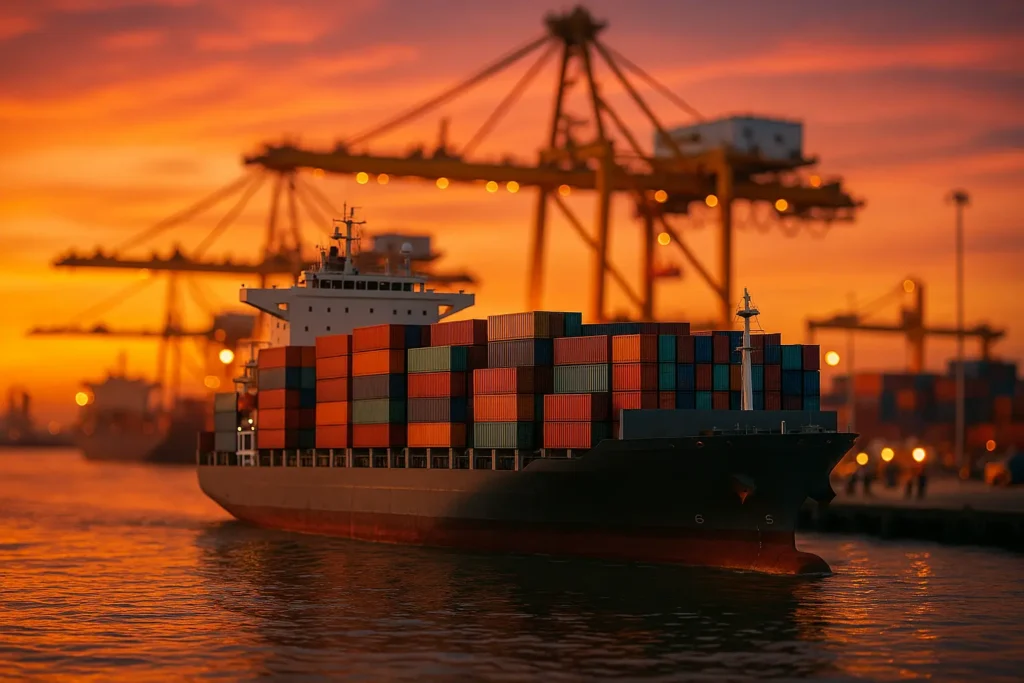The world has never felt smaller than it does today. As we stand on the precipice of an era defined by global trade, we find ourselves reflecting on what the past few years have taught us about industry, resilience, and adaptation. The shipping crisis, born out of a perfect storm of supply chain disruptions, capacity constraints, and a global pandemic, has been a challenge for industries worldwide. And yet, it’s this very crisis that has unveiled lessons we will carry forward. Let’s take a modern journalistic dive into the story behind the numbers and the headlines.
The Ripple Effect on the Supply Chain
The shipping crisis wasn’t just a blip on the radar; it was a seismic shift that echoed throughout every corner of the supply chain. Containers were left languishing in ports, ships were rerouted or delayed, and businesses held their breath as the demand for goods surged like never before. In this whirlwind, we learned that supply chains aren’t just about moving products from point A to point B. They’re the backbone of our global economy.
The sheer complexity of global trade was laid bare when ports reached their capacity limits. Pandemic restrictions added layers of complexity, with health protocols causing further delays. It was a reminder that we must balance immediacy with preparedness, ensuring that our systems can withstand future shocks.
In response, we saw a shift from just-in-time to just-in-case strategies. Businesses are now investing in diversified supplier networks and smarter inventory management to cushion against similar disruptions. This recalibration of priorities has led to more resilient supply chains, equipped to handle the unexpected challenges of tomorrow.
The New Face of Global Trade
The narrative of global trade transformed with the shipping crisis. The temporary paralysis of major ports exemplified the fragility of our interconnected world. As demand for goods soared, the bottleneck revealed the depth of our dependence on a finely-tuned logistical dance.
However, this wasn’t just a tale of struggle. Innovation and technology rose to the occasion, offering new avenues for trade facilitation. Automation and digitization of ports, driven by AI advancements, have promised to smoothen the wrinkles in the supply chain fabric.
Yet, the most profound lesson lies in collaboration. Governments, businesses, and international trade organizations came together more than ever before, forging partnerships to navigate these turbulent waters. The crisis may have been a wake-up call, but it also underscored the power of collaboration in solving complex global issues.
The Evolution of the Shipping Industry
This crisis has been the crucible for change within the shipping industry. Once a steadfast entity, it now finds itself evolving rapidly. The importance of container logistics couldn’t be overstated, as the demand for shipping capacity reached unprecedented heights.
In response, the industry is embracing sustainability and efficiency as never before. Eco-friendly ships and alternative fuels are now at the forefront, redefining what it means to be a modern shipping giant. The quest for green shipping is no longer a distant goal but a present priority.
Furthermore, the crisis highlighted the need for agility. The days of rigid schedules are behind us. Instead, real-time data analytics are now guiding decisions, ensuring that routes are optimized, and goods are delivered timely. This digital transformation is reshaping the landscape, ushering in an era where the shipping industry isn’t just reactive but proactive.
Beyond the Crisis: A Lesson in Resilience
While the shipping crisis exposed vulnerabilities, it also showcased the astonishing resilience of industries worldwide. The ability to pivot and adapt has been nothing short of remarkable. As we look beyond the crisis, we carry with us a roadmap for navigating future uncertainties.
The crisis has taught us that resilience isn’t just about bouncing back; it’s about bouncing forward. It’s about learning from the past to build a future where global trade isn’t at the mercy of a single event. By investing in infrastructure, embracing technology, and fostering global cooperation, we are laying the groundwork for a more robust and interconnected world.
We stand at the dawn of a new era in global industry — one defined by lessons learned and the relentless pursuit of improvement. Today’s challenges are the stepping stones for tomorrow’s triumphs.
As we turn the page on this chapter of global commerce, we do so with a renewed understanding of our world. The shipping crisis was more than a disruption; it was an educator. It taught us the value of preparedness, the power of innovation, and the strength of collaboration.
In this new era, we approach challenges not with trepidation but with the knowledge that we have the tools to overcome them. The landscape of global trade has shifted, but so have we. Armed with insights from the past, we’re ready to step into the future, confident in our ability to navigate the complexities of tomorrow’s economy.
FAQ
What are the main reasons the shipping crisis impacted global industries?
The shipping crisis highlighted vulnerabilities in the global supply chain, primarily due to port congestion, container shortages, and delays caused by the COVID-19 pandemic. These factors disrupted the timely movement of goods, affecting industries worldwide.
How did the shipping crisis affect consumer behavior?
Consumers experienced increased waiting times for products, leading to shifts in purchasing habits. Many turned to local alternatives or adjusted expectations for delivery timelines due to the prolonged delays in international shipments.
What lessons have businesses learned from the shipping crisis?
Businesses recognized the importance of diversifying supply sources and building more resilient supply chains. There is now a greater emphasis on investing in technology for better logistics management and exploring nearshoring options to reduce dependency on long-distance shipping.
In what ways did the shipping crisis influence environmental considerations in global trade?
The crisis underscored the environmental impact of long-distance shipping, prompting industries to explore greener alternatives. There’s been an increased focus on reducing carbon footprints by optimizing shipping routes and considering eco-friendly transportation modes.
How has the shipping crisis reshaped the future of logistics and supply chain management?
The crisis accelerated innovations in logistics, leading to advancements in real-time tracking systems and improved data analytics. Companies are now prioritizing flexible, adaptive supply chain models to better manage future disruptions.



